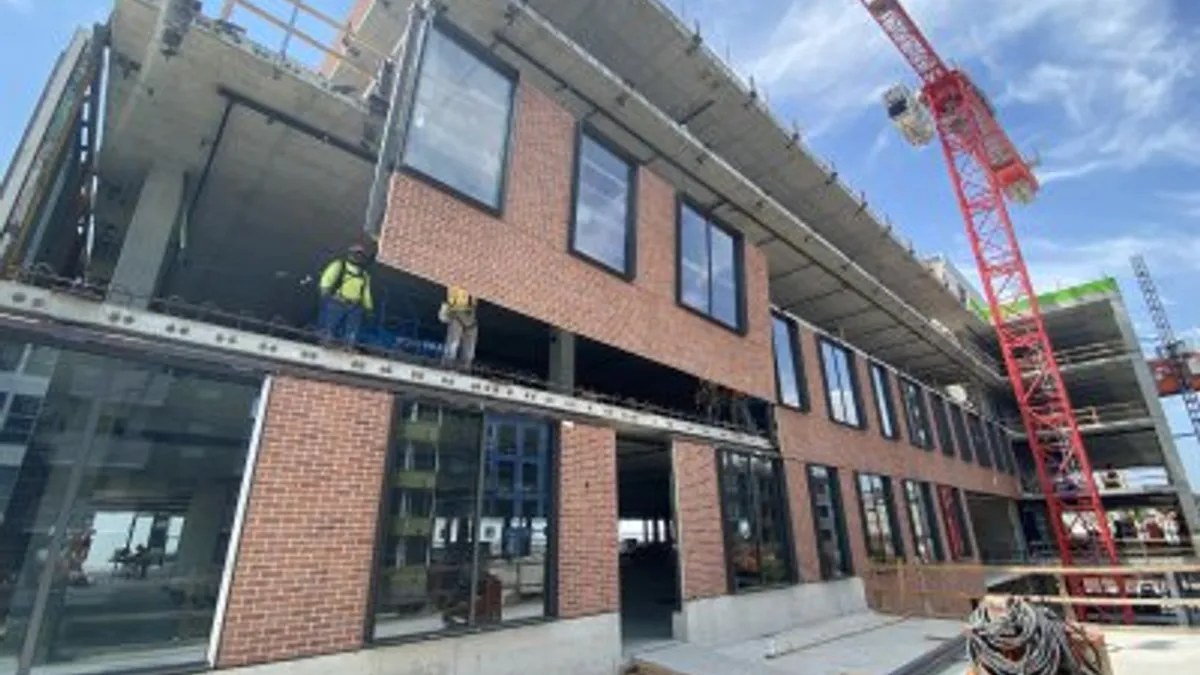The years ahead will present construction stakeholders with a wave of new challenges alongside familiar issues like rising costs, sustainability and a shortage of skilled labor. At the same time, these compounding challenges offer an opportunity to push the construction industry forward and improve the quality of the built environment. The challenges facing the construction industry may be complex and multi-layered, but there are some solutions that solve multiple problems at once.
Embrace Collaboration and Partnership
The construction ecosystem is long overdue for an overhaul of how disparate teams work together. The challenges that plague construction, both old and new, can't be addressed when stakeholders are forced to focus on their individual profits, timelines and deliverables.
So, what exactly does collaboration in construction look like? It varies. It can be as simple as implementing technology that streamlines internal processes; and it can be as complex as restructuring your organization and go-to-market strategy to be more competitive as the construction supply chain becomes more consolidated.
Both avenues are necessary to keep up with the future of construction, and they both provide tangible benefits. Using technology as a foundation, construction firms can not only break down silos, they can also integrate the construction supply chain. McKinsey predicts that construction value and profit pools will shift dramatically, and by 2035, total profit pools may double, unlocking $265 billion in potential new profit for stakeholders who take the lead in embracing change.1 But design professionals and general contractors risk getting left behind. General contractors must offer more than execution alone, and design will face increased commodification and automation. To stay ahead of the curve, stakeholders must focus on building partnerships and alliances that are centered on delivering better outcomes and value to owners, not just project-based transactions.
Explore Offsite Construction
Offsite construction refers to the practice of constructing building elements in a setting outside of the building's final location. Also referred to as prefabrication or modular construction, offsite construction isn't a new concept. But it's gaining popularity due to its ability to address many of the challenges the construction industry is facing.
By shifting many construction activities away from the job site and into factory settings, developers and contractors can control costs, improve project scheduling and reliability and reduce risk. With prefabrication, multiple processes (such as foundation work and manufacturing) can take place simultaneously, significantly reducing building time. It can cut schedules by 20-50%.2 And since fewer workers are needed for onsite assembly, it can reduce overall site impacts and congestion.
Digital tools and improved logistics networks are improving the quality of prefabricated structures, making them well-suited to tackle the construction challenges of the future. Also, as the construction industry moves towards productization to take advantage of economies of scale and better integrate the supply chain, offsite construction aligns well with that shift. Western states can benefit from prefabrication, as it can deliver the most value to areas experiencing serious housing and labor shortages.
One of the biggest hurdles to implementing prefabrication is that it must be considered from the start. This can place a considerable burden on designers. But when you consider that design will become increasingly commodified and automated, it's a burden that will pay off by enabling firms to deliver greater value to developers and owners.
Advice for Getting Started: Engage Early
Getting the full value of prefabrication requires early engagement and collaboration. This represents a paradigm shift for owners and project teams. Prefabrication should be a part of the project strategy from the beginning and requires solid teamwork, earlier design decisions and a continuous iterative estimating process aligned with target value design.
It's critical that the decision to move forward with prefabrication is made in the conceptual phase of a project. In an ideal timeline, owners will consider offsite construction even before a project is conceived, so their proformas can account for and better communicate the values of improved schedules, cost certainty and reduced risks.
Increasingly, owners are expecting a design and construction process that is efficient, productive and cost-effective to a degree that traditional construction methods are unable to deliver, particularly in a post-COVID world. As we emerge from the pandemic, prefabrication is an approach that, in many cases, makes more sense.






